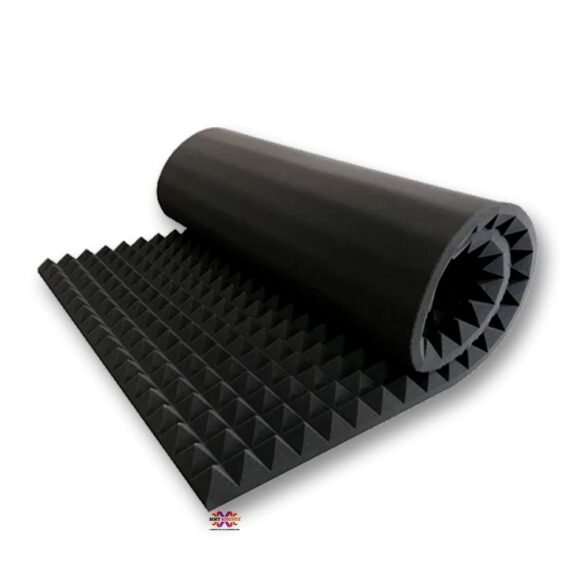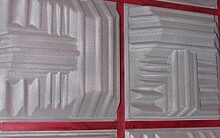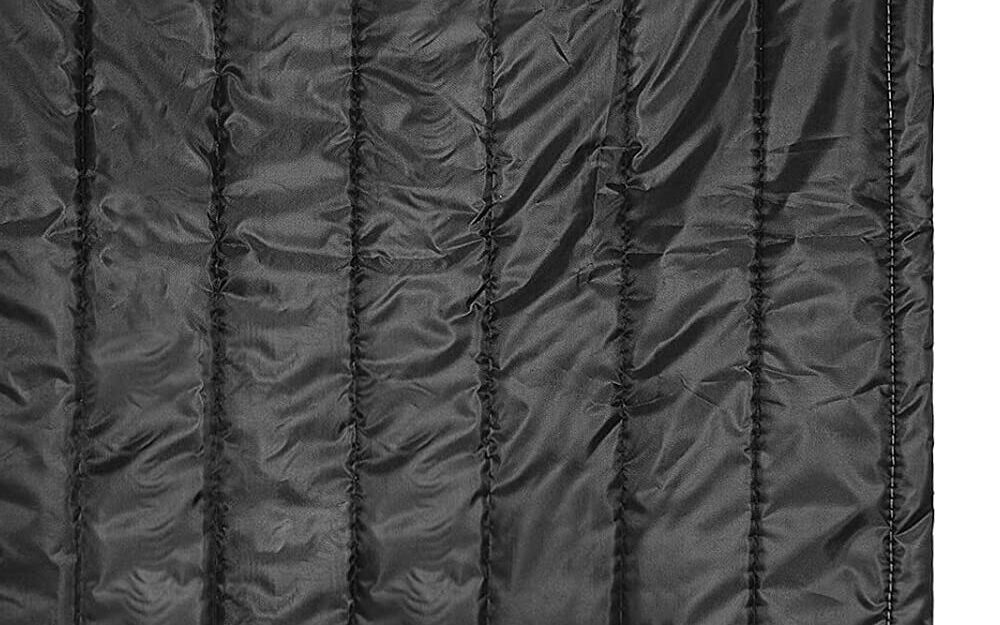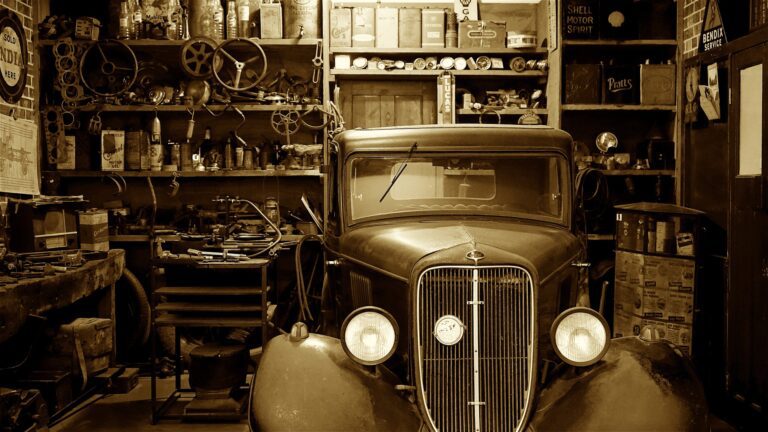If you’re a musician, chances are you’ve probably thought about using your garage as a practice space. After all, it’s a perfect size, and you don’t have to worry about disturbing your neighbors.
The only problem is, if you don’t soundproof your garage properly, you’ll still be disturbing your neighbors and family!
That’s why today I’m going to give you an ultimate guide on how to soundproof your garage for band practice.
How to Soundproofing Your Garage for Band Practice
Soundproofing your garage for band practice is not as complicated as it may seem. It’s a process that takes patience and planning, but if done correctly, you’ll be able to enjoy your practice space without worrying about noise complaints.
Here are the steps you need to take:
- Determine your goals : Before you start soundproofing, you need to determine what your goals are. Are you just looking to dampen the sound of your instruments? Or do you want to completely block out the sound? This will help you determine what materials and techniques you need to use to achieve your desired results.
- Make a plan : Once you’ve determined your goals, you need to make a plan. This means figuring out what materials and techniques you’re going to use and where you’re going to use them. This will help you stay organized and make sure you don’t miss any important steps.
- Take measurements : Now that you have a plan, you need to take measurements of your garage. You need to measure the walls, ceiling, and floor. You also need to measure any doors or windows. This will help you determine how much material you need to purchase.
- Purchase materials : Now you’re ready to start purchasing materials. You’ll need to buy soundproofing materials such as acoustic foam, sound baffles, and acoustic blankets. You may also need to purchase some additional items such as construction adhesive, caulk, and insulation.
- Install the materials : Now it’s time to start installing the materials. You’ll need to start with the walls, ceiling, and floor. Install the materials according to the instructions on the packaging. Don’t forget to take extra time when installing materials around doors and windows.
- Test your soundproofing : Once you’ve finished installing the materials, it’s time to test your soundproofing. Play some music or practice with your instruments and see if you can hear the sound outside of the garage. If you can, you may need to add more materials or adjust the materials you’ve already installed.
By following these steps you’ll be able to soundproof your garage and create a practice space that won’t disturb your neighbors. Now let’s look at the best materials you can use to soundproof your garage.
What are the Best Materials for Soundproofing?
When it comes to soundproofing, there are a few different materials that you can use. Here are the best materials for soundproofing your garage:
Acoustic Foam

Acoustic foam is the most popular material for soundproofing. It’s easy to install and helps absorb sound waves that bounce off of walls and ceilings.
Sound Baffles

Sound baffles are lightweight panels that are designed to absorb sound waves. They’re easy to install and can be placed on walls and ceilings.
Acoustic Blankets

Acoustic blankets are also a great option for soundproofing. They’re made from thick, sound-absorbing material and can be hung from walls and ceilings.
Construction Adhesive

Construction adhesive is a great way to seal up any gaps or cracks that may be in the walls or ceiling of your garage. It’s important to make sure that the adhesive is compatible with the material you’re using.
Caulk
Caulk is another great option for sealing up gaps or cracks in walls and ceilings. You can also use caulk to seal up windows and doors.
These are the best materials to use when soundproofing your garage. Now let’s look at the benefits of soundproofing your garage.
The Benefits of Soundproofing Your Garage
Soundproofing your garage has a lot of benefits, both for you and your neighbors. Here are the top benefits of soundproofing your garage:
- Improved Acoustics – Soundproofing your garage will help improve the acoustics of your practice space. This means you’ll be able to hear the sound of your instruments more clearly and be able to practice more effectively.
- Reduced Noise Pollution – Soundproofing your garage will also reduce the amount of noise pollution you create. This means that your neighbors won’t be disturbed by your practice sessions and you won’t have to worry about getting complaints.
- Increased Privacy – Soundproofing your garage will also help increase your privacy. This means that you can practice without worrying about being heard by your neighbors or passersby.
- Cost Savings – Soundproofing your garage can also help you save money. Since you won’t be disturbing your neighbors or family, you won’t have to worry about paying for a space to practice.
Soundproofing your garage has a lot of great benefits. Now let’s look at how to soundproof your garage walls.
How to Soundproof Your Garage Walls
Soundproofing your garage walls is one of the most important steps in soundproofing your garage. Here are the steps you need to take:
- Measure the walls – The first step is to measure the walls. This will help you determine how much material you’ll need to purchase.
- Purchase materials – Once you’ve taken measurements, you need to purchase the materials you’ll need to soundproof the walls. This includes acoustic foam, sound baffles, and acoustic blankets.
- Install the materials – Now you’re ready to start installing the materials. Start by applying construction adhesive to the walls and then place the acoustic foam or sound baffles on top. Make sure to leave a few inches between each panel for air circulation.
- Seal up gaps – After you’ve installed the materials, you need to seal up any gaps or cracks in the walls. You can use caulk or construction adhesive to do this.
- Test your soundproofing – Once you’ve finished installing the materials, it’s time to test your soundproofing. Play some music or practice with your instruments and see if you can hear the sound outside of the garage.
By following these steps you’ll be able to soundproof your garage walls and reduce the amount of noise that escapes your practice space. Now let’s look at how to soundproof your garage ceiling.
Read More :
How to Soundproof Dorm Room : Block Out Noise
How To Soundproof a Ceiling From Noisy Neighbours
How to Soundproof Your Garage Ceiling
Soundproofing your garage ceiling is just as important as soundproofing your walls. Here are the steps you need to take:
- Measure the ceiling – The first step is to measure the ceiling. This will help you determine how much material you’ll need to purchase.
- Purchase materials – Once you’ve taken measurements, you need to purchase the materials you’ll need to soundproof the ceiling. This includes acoustic foam, sound baffles, and acoustic blankets.
- Install the materials – Now you’re ready to start installing the materials. Start by applying construction adhesive to the ceiling and then place the acoustic foam or sound baffles on top. Make sure to leave a few inches between each panel for air circulation.
- Seal up gaps – After you’ve installed the materials, you need to seal up any gaps or cracks in the ceiling. You can use caulk or construction adhesive to do this.
- Test your soundproofing – Once you’ve finished installing the materials, it’s time to test your soundproofing. Play some music or practice with your instruments and see if you can hear the sound outside of the garage.
By following these steps you’ll be able to soundproof your garage ceiling and reduce the amount of noise that escapes your practice space. Now let’s look at how to soundproof your garage floor.
How to Soundproof Your Garage Floor
Soundproofing your garage floor is just as important as soundproofing your walls and ceiling. Here are the steps you need to take:
- Measure the floor – The first step is to measure the floor. This will help you determine how much material you’ll need to purchase.
- Purchase materials – Once you’ve taken measurements, you need to purchase the materials you’ll need to soundproof the floor. This includes acoustic foam, sound baffles, and acoustic blankets.
- Install the materials – Now you’re ready to start installing the materials. Start by applying construction adhesive to the floor and then place the acoustic foam or sound baffles on top. Make sure to leave a few inches between each panel for air circulation.
- Seal up gaps – After you’ve installed the materials, you need to seal up any gaps or cracks in the floor. You can use caulk or construction adhesive to do this.
- Test your soundproofing – Once you’ve finished installing the materials, it’s time to test your soundproofing. Play some music or practice with your instruments and see if you can hear the sound outside of the garage.
By following these steps you’ll be able to soundproof your garage floor and reduce the amount of noise that escapes your practice space. Now let’s look at how to soundproof your garage door.
Soundproofing Your Garage Door
Soundproofing your garage door is just as important as soundproofing your walls, ceiling, and floor. Here are the steps you need to take:
- Measure the door – The first step is to measure the door. This will help you determine how much material you’ll need to purchase.
- Purchase materials – Once you’ve taken measurements, you need to purchase the materials you’ll need to soundproof the door. This includes acoustic foam, sound baffles, and acoustic blankets.
- Install the materials – Now you’re ready to start installing the materials. Start by applying construction adhesive to the door and then place the acoustic foam or sound baffles on top. Make sure to leave a few inches between each panel for air circulation.
- Seal up gaps – After you’ve installed the materials, you need to seal up any gaps or cracks in the door. You can use caulk or construction adhesive to do this.
- Test your soundproofing – Once you’ve finished installing the materials, it’s time to test your soundproofing. Play some music or practice with your instruments and see if you can hear the sound outside of the garage.
By following these steps you’ll be able to soundproof your garage door and reduce the amount of noise that escapes your practice space. Now let’s look at how to add soundproofing treatments to your garage.
Adding Soundproofing Treatments to Your Garage
In addition to soundproofing your walls, ceiling, floor, and door, you can also add soundproofing treatments to your garage. Here are a few treatments you can add:
- Acoustic Panels – Acoustic panels are a great way to reduce the amount of reverberation in your garage. They’re easy to install and can be placed on walls and ceilings.
- Acoustic Curtains – Acoustic curtains are another great option for reducing reverberation in your garage. They’re made of thick, sound-absorbing material and can be hung from walls and ceilings.
- Acoustic Tiles – Acoustic tiles are another great way to reduce reverberation in your garage. They’re easy to install and come in a variety of colors and patterns.
These are just a few of the soundproofing treatments you can add to your garage. By adding these treatments, you’ll be able to reduce the amount of reverberation and create a better practice space.
Conclusion
Soundproofing your garage for band practice is a great way to create a practice space that won’t disturb your neighbors. By following the steps outlined in this guide, you’ll be able to soundproof your garage and enjoy your practice sessions without worrying about noise complaints.
And by adding soundproofing treatments to your garage, you’ll be able to reduce the amount of reverberation and create a better practice space. So what are you waiting for? Start soundproofing your garage today and enjoy the benefits of a quiet, peaceful practice space.
